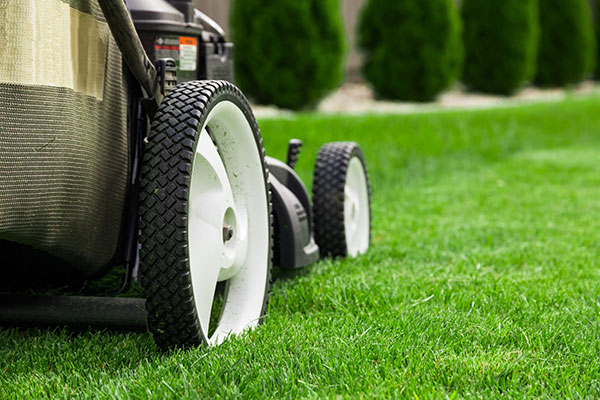TIPS
Deaver Lawn Care
Follow These Tips For A Beautiful Looking Lawn!
In Oklahoma, where the climate can be quite hot and dry, proper lawn mowing techniques are essential for maintaining a healthy and vibrant yard. One crucial tip is to adjust the cutting height of your mower to accommodate the weather conditions. During the warmer months, raising the cutting height helps shade the soil, reducing water evaporation and promoting deeper root growth. However, during cooler periods, lowering the cutting height can prevent the grass from becoming too dense and suffocating itself. Additionally, it’s advisable to mow in the early morning or late afternoon to avoid the intense midday heat, which can stress both you and your lawn.
Another important aspect of lawn mowing in Oklahoma is to adhere to the one-third rule. Never cut more than one-third of the grass blade’s length in a single mowing session. Cutting too much at once weakens the grass and can leave your lawn vulnerable to diseases and pests. Regular mowing, typically once a week during the growing season, helps maintain an even height and encourages lateral growth, resulting in a denser and healthier turf. Lastly, remember to keep your mower blades sharp to ensure clean cuts that minimize stress on the grass and promote quicker recovery.

- Water deeply and infrequently: In Oklahoma’s hot and dry climate, it’s crucial to water your lawn deeply but less frequently. This encourages deeper root growth, making your grass more resilient to drought conditions. Aim for about 1 to 1.5 inches of water per week, applied in one or two watering sessions, rather than frequent shallow watering.
- Water early in the morning: Watering your lawn early in the morning, before the sun is at its peak, helps minimize water loss due to evaporation. It also allows the grass blades to dry out during the day, reducing the risk of fungal diseases. Avoid watering in the evening, as prolonged moisture on the grass overnight can promote fungal growth.
- Use a sprinkler system or soaker hoses: Consider installing a sprinkler system with adjustable heads or using soaker hoses to ensure even water distribution across your lawn. This helps prevent overwatering in some areas and underwatering in others, promoting uniform growth throughout your yard.
- Monitor soil moisture levels: Keep an eye on soil moisture levels to ensure you’re providing adequate water without overdoing it. You can use a soil moisture meter or simply perform a visual inspection by checking the soil’s appearance and feeling it for dryness. Adjust your watering schedule as needed based on weather conditions and the moisture needs of your lawn.
- Fertilize strategically: Oklahoma’s varying climate, with its hot summers and occasional droughts, requires a tailored approach to fertilization. Apply fertilizer in the spring and fall, avoiding the hottest months to prevent stressing the grass. Look for fertilizers with a balanced blend of nutrients suited to your grass type and soil conditions.
- Aerate regularly: Aerating your lawn helps alleviate soil compaction, allowing water, air, and nutrients to penetrate the root zone more effectively. Aim to aerate at least once a year, preferably in the fall or spring when the grass is actively growing. This promotes stronger root development and overall turf health.
- Manage thatch buildup: Thatch, a layer of dead grass and organic matter that accumulates between the soil and grass blades, can impede water and nutrient absorption. Periodically dethatch your lawn, especially if the layer exceeds half an inch in thickness. Consider power raking or using a dethatching machine to remove excess thatch and promote a healthier lawn.
- Control weeds: Weeds can quickly invade and overtake a lawn if left unchecked. Implement a proactive weed control strategy that includes regular mowing, proper fertilization, and targeted herbicide applications as needed. Consider using pre-emergent herbicides in the spring to prevent weed seeds from germinating and post-emergent herbicides to target existing weeds.
- Address bare spots promptly: Bare spots in your lawn provide an opportunity for weeds to take hold and detract from the overall appearance of your yard. Re-seed or sod bare areas as soon as possible to encourage grass growth and prevent further weed encroachment. Keep the newly seeded or sodded areas adequately watered to promote establishment.
